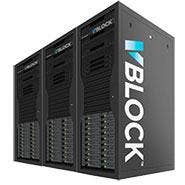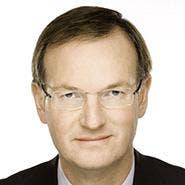VCE As Part Of EMC II To Be More Agile, Keep Cisco At Core: Execs

EMC and Cisco on Wednesday said the decision to move the VCE joint venture into EMC's Information Infrastructure business will help the companies increase their agility while maintaining their close partnership over the longer term.
EMC confirmed weeks of speculation about VCE by unveiling a plan to make VCE part of the EMC Information Infrastructure business, or EMC II, which is led by CEO David Goulden.
After buying out most of Cisco's 35 percent share in VCE, EMC plans to move it into its federation of subsidiary companies, which includes VMware, Pivotal and RSA.
[Related: It's Official: VCE Becoming An EMC Company]
However, according to EMC, Cisco and VCE executives, the primary focus of VCE -- the building of Vblock converged infrastructure solutions containing EMC, Cisco and VMware technology -- will not change.
VCE will continue to have its own mission, operating charter and organizational structure, with VCE CEO Praveen Akkiraju continuing to lead the organization, EMC said.
It is the right move for VCE, said Jamie Shepard, regional and health systems senior vice president at Lumenate, a Dallas-based solution provider and longtime partner to EMC, Cisco and VCE.
In a way, the move is a formal recognition of how VCE's business has been developing, Shepard told CRN.
There are two primary-use cases for VCE, Shepard said. The first is for customers who don't understand the components that go into a data center infrastructure and who want the ease of management a Vblock offers. The second is enterprise customers who do understand the components but who want the deployment and patching done for them so they can focus on their applications.
"For VCE customers, it's no longer a question of converged infrastructure," he said. "It's now about ease of use and management. We're now talking about VCE being version 1 of software-defined data centers."
Furthermore, Shepard said, the movement of VCE into EMC II just formalizes what has been an EMC-centric sales push for the organization.
NEXT: VCE Hard To Manage, Could Be Smoother Under EMC

"Ever since the early days, when it was known as 'Acadia,' we've gone to talk about it with the EMC team," Shepard said. "And we're aligning closely with the EMC team on a current health-care deal. The customer is a perfect fit for Vblocks. Not converged infrastructure. Vblocks."
Back when VCE was first formed, EMC was focused on storage, while VMware didn't care about storage and Cisco really wanted to focus on getting into the data center, Shepard said.
"It got cumbersome," he said. "However, now EMC has been leading, and Cisco now has a mature data center business."
VCE served its purpose, Shepard said. "It helped define what true convergence is," he said. "But Vblocks also defined what software-defined data centers can be. VCE also showed how to do predefined technology stacks. It was a strong story."
David Gottesman, principal at Epic Machines, a San Francisco-based solution provider and VCE partner, said he thought VCE was somewhat of a bad idea from the get-go.
"VCE made sense from a configuration point of view, but not as a company," Gottesman told CRN. "It did a lot to build the converged infrastructure business. But its window of opportunity is shrinking."
Gottesman said that a company with multiple parents carries a certain amount of risk. "So many different companies are involved, and each one has its own agenda," he said. "The technology providers, being locked into long-term deals, presents real risks to the vendors involved."
Gottesman described VCE as a three-headed monster that's not sure which head is going to go where. "They have competing agendas," he said.
Goulden, responding to an analyst question about VCE during EMC's third-quarter 2014 quarterly analyst call, said that VCE will continue to build Vblocks based on the same EMC, Cisco and VMware technology it has been using, and so customers should not expect any big changes.
"So bringing it [into EMC] doesn't really change the portfolio," Goulden said.
Goulden also called the move to bring VCE into EMC II exciting, as VCE is the top vendor in the converged infrastructure market with a $2 billion annual run-rate. That, he said, makes VCE a key asset for expanding EMC's opportunity to develop a larger range of commercial solutions and to make Vblocks a part of EMC's hybrid cloud strategy.
"Converged infrastructure is important to our strategy as a company," he said. "Bringing it into our company lets us double-down."
NEXT: VCE, EMC Say No Changes In Relationship With Cisco
EMC Chairman Joe Tucci, responding to analysts' questions at the same conference call, said the move to bring VCE into EMC II was done in close cooperation with Cisco.
Tucci said that any time there is a joint venture like VCE, the relationship will change over time. "They need to morph, change," he said. "This is one of those changes."
When asked how confident he is that Cisco will continue working with VCE, Tucci said VCE has more than 1,000 customers and has shipped in excess of 2,000 Vblocks. Furthermore, Tucci said, despite rumors that VCE was in trouble, it still grew 50 percent over last year.
"I believe Cisco is one of our top, top partners, and will remain a top, top partner," he said. "Of course, there's coopetition. ... But we've learned how to coopetate."
Goulden also said there will be no big changes in store for VCE, which will have its own sales and engineering forces as it comes into EMC as a specialty group.
"Vblock will remain exclusively as having technology from Cisco and VMware," he said.
During a short press conference following the EMC analyst call that focused specifically on the VCE news, Howard Elias, president and chief operating officer for EMC's global enterprise services, said the move to bring VCE into EMC is expected to close before the end of this quarter.
In response to an audience question, Elias said all the partners participated in the planned VCE transition. "It was absolutely a joint decision," he said.
Cisco President and Chief Operating Officer Gary Moore said at the press conference that VCE has been a success, and that Cisco will continue supporting it.
"VCE is one of the most successful, if not the most successful, joint ventures in history. ... The EMC-Cisco partnership remains extremely strong."
In response to an audience question, Moore said that the move to EMC will make VCE more agile in that it now has to go to only one parent for investments. He also said VCE has a strong road map for the future.
When asked about how VCE as part of EMC can be more agile, Akkiraju responded that customers are talking about their journey to the cloud, and that VCE as a part of EMC can take advantage of other parts of the parent company, such as Pivotal, to develop solutions as needed.
VCE's core is about creating solutions "and eliminating the complexity of doing so," he said.
VCE continues to have a strong road map with technologies from the current partners in the lead, Akkiraju said. "And there are no better technologies than from EMC, Cisco and VMware," he said.
PUBLISHED OCT. 22, 2014